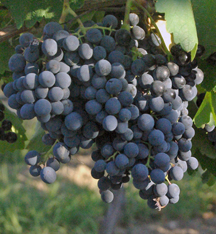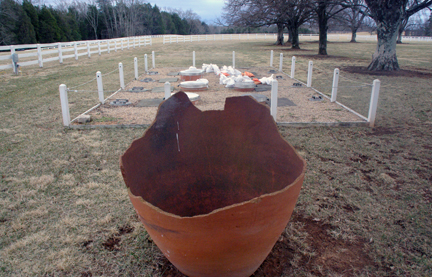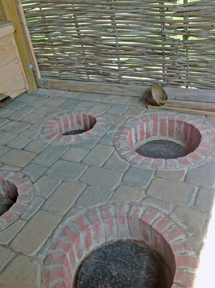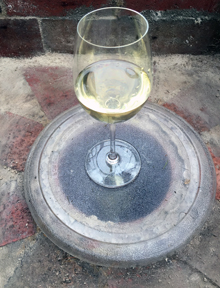The country Georgia has the longest, continuous winemaking tradition on the globe. They have 8,000 vintages. Yet, much about the viticulture and enology from this country is unknown by wine enthusiasts. There are those in the United States who are exceptions. We are constantly in search for native Georgian varietal grapes grown in the United States and ancient Georgian winemaking technique with qvevri buried in the ground. Qvevri winemaking is the only winemaking process that is on the UNESCO list of Intangible Cultural Heritage.
Sitting in the lobby of the Hotel Giò in Perugia, Italy, I joined a group from the country Georgia. Ia Tabagari was pouring wines from Georgia. Earlier that day I attended a session where Ia talked about qvevri winemaking. I found it extremely fascinating. The first wine Ia poured was an Rkatsiteli. I mentioned that I had wines made with this grape in the United States. The Georgians were surprised. Next they poured a Saperavi that I also had in the United States. The two main Georgian grapes, a white and a red, I have previously tasted at wineries in the Finger Lakes region of New York. In addition I had the white Rkatsiteli at wineries in Virginia.
Conducting a bit of research reveals the road these two varietal grapes have taken from Georgia to America. The six thousand mile journey was trekked by Dr. Konstantin Frank who managed a vineyard in the Kakheti region of eastern Georgia. Dr Frank eventually settled along Keuka Lake in the Finger Lakes region of New York. His research on cool and cold climate viticulture, while at the University of Odessa, led him to plant vitis vinifera grapes on his New York property. Dr. Frank is largely responsible for championing the planting of European grapes in the Finger Lakes region, where at the time native American grapes thrived.
Dennis Horton of Horton Cellars in Gordonsville, Virginia acquired Rkatsiteli cuttings from Dr. Frank and now has several acres of Rkatsiteli growing in Virginia. Other Virginia wineries source some of the Rkatsiteli grapes and produce Rkatsiteli wines. A few wineries in the Finger Lakes are growing Saperavi that has also made its way to a winery in central Pennsylvania. Fero Vineyards and Winery in Lewisburg, Pennsylvania acquired Saperavi grapes from Dr. Frank’s descendants and has produced their first vintage. Georgian grape varieties are slowly beginning to spread throughout the United States. What about ancient Georgia qvevri winemaking?
Our first view of qvevri in the United States was at Castle Hill Cider in Keswick, Virginia. Stuart Madany, production manager purchased several qvevris from craftsmen in Georgia and is fermenting cider in them. The qvevris were buried outside near the winery production area. Also buried outside, we observed a marani of qvevris at St. David Agmashenebeli, a Georgian Orthodox Monastery in Ashley just outside of Wilkes-Barre, Pennsylvania. Then there is the buried qvevri that Kathy and I brought back from Georgia and buried outside our house in central Maryland. We made our first wine in that small qvevri in 2014.
As American winemakers become aware of qvevri winemaking, some will want to experiment. The biggest challenge is acquiring qvevris to bury. Fortunately, America has a qvevri maker in Texas. The Qvevri Project is a group that is supporting qvevri winemaking with Georgian grape varieties in the United States. Billy Ray Mangham of Sleeping Dog Pottery in San Marcos, Texas is making and selling qvevris. He traveled to Georgia and learned qvevri making from craftsmen. Joining Billy Ray on the Qvevri Project are winemakers Dr. Brent Trela and Tom Vincent. The Qvevri Project also conducts research investigating wine production in qvevri.
We have also heard of others in the United States who are growing Georgian grape varieties and making wine in qvevris, but we have not had an opportunity to visit them. Although qvevri winemaking may not be embraced by all American winemakers, there are enough who are creative and have a spark of interest in experimenting with wines made in buried qvevri. This interest is growing as more awareness of ancient winemaking techniques are learned.
Qvevri winemaking is fascinating due to its long history and the wines this technique produces. When you have an opportunity be sure to indulge in a tasting of qvevri-made wine.
For more information about wineries and winemaking in the country Georgia, visit our Georgia articles. For information about qvevri winemaking, check out our winemaking site.
Cheers,
Terry
-1.5in.jpg)





